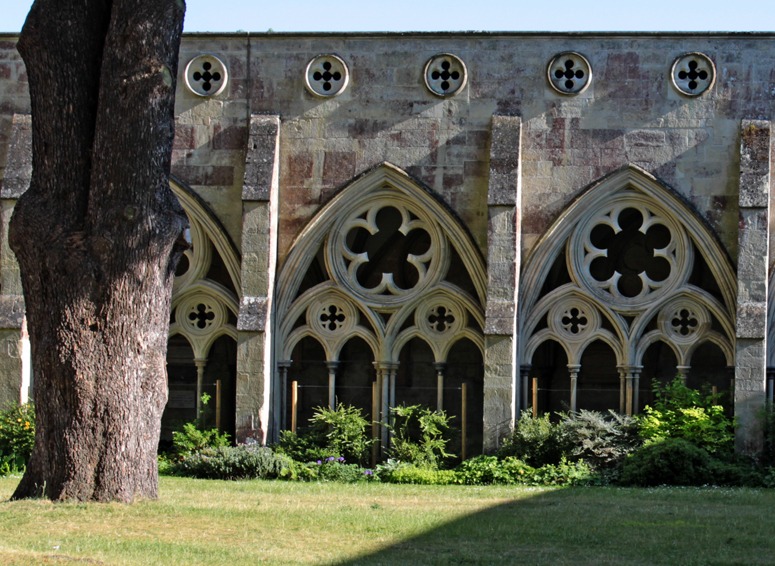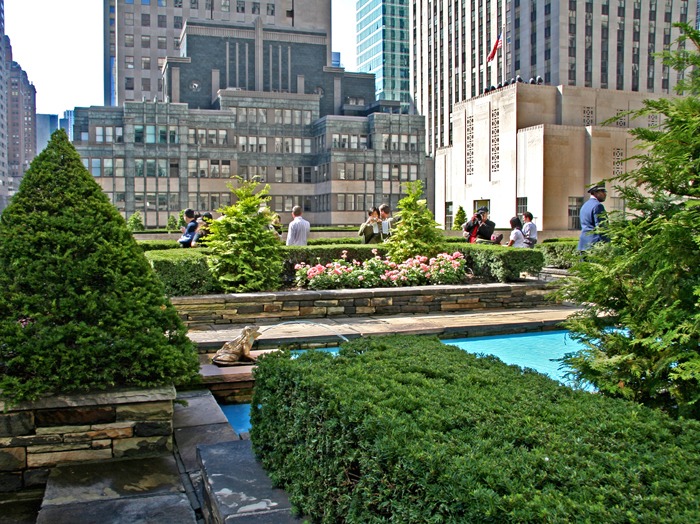 Probably the best incentive (but not the only reason) to consider our fellow mobile inhabitants of planet earth in our designs is their incredible cuteness. Unfortuneately, even the cutest of creatures, the wombat can be considered a ‘pest’ because they damage crops and fences and cattle may break their legs when they step in their burrows and because their burrows provide shelter for that other notorious crop damaging pest the rabbit. However the wombat apart from its cuteness has some interesting tunneling experience from which the astute engineer could learn. Wombat burrows are well designed and well ventilated. “Since temperatures underground are more moderate (less variable), the burrows help keep the wombat cooler in the warm months, and warmer in the cooler months. The burrow’s design provides a stable micro-environment for the wombat by controlling the temperature, oxygen, and carbon dioxide levels.”
Probably the best incentive (but not the only reason) to consider our fellow mobile inhabitants of planet earth in our designs is their incredible cuteness. Unfortuneately, even the cutest of creatures, the wombat can be considered a ‘pest’ because they damage crops and fences and cattle may break their legs when they step in their burrows and because their burrows provide shelter for that other notorious crop damaging pest the rabbit. However the wombat apart from its cuteness has some interesting tunneling experience from which the astute engineer could learn. Wombat burrows are well designed and well ventilated. “Since temperatures underground are more moderate (less variable), the burrows help keep the wombat cooler in the warm months, and warmer in the cooler months. The burrow’s design provides a stable micro-environment for the wombat by controlling the temperature, oxygen, and carbon dioxide levels.”
Category Archives: Garden Design
Please change the inappropriate planting design in Salisbury Cathedral cloister "garden"

Is the planting in Salisbury Cathedral Cloister designed to hide the 'ugly' medieval stonework in England's largest cloister 'garden'?
It takes one’s breath away. How can the managers of Salisbury Cathedral Cloister be so misguided in their approach to planting design? Do they really want to give one of the masterpieces of medieval European landscape architecture (1280) the character of a Victorian vicarage? The apparent aim is to hide the floral tracery of arcades behind a shrubbery, and to hide those ugly stone columns with some nice green tanalized wooden posts – even the galvanized wire does not make them beautiful. Perhaps the trouble began when some past prelate had the idea of being buried in the cloister, making his successors think the place was a boneyard. Ugh. I wish the Church of England could resolve its problems with women priests, gay priests and planting design. The solutions are obvious and I would give them my advice with free and tolerant humility. Prima facie, I suggest (1) leave the cedars, despite their historical inaccuracy (2) remove the shrubbery (3) manage the grass as even more of a flowery mead than its present condition, (4) perhaps, have an annual design for the layout of mown paths in the millefiori.
(See yesterday’s post on the social use of cloister garths)
The use of cloister courts and garths for memorial plaques is fairly common in England. It can be compared to memorial plaques inside cathedrals and, of course, to the tomb gardens of Egypt, China, India and elsewhere. But it does not feel right and I think the Buddha had the right attitude when he asked for his grave to be unmarked. It was a sign of humility. Memorials smack of ostentation. But placing an engraved stone on a wall or floor is preferable to memorial stones in grass: they are often unsightly; they diminish the vegetated area; they are impure.
Christianity, music, sacred trees, garden design and the architecture of a new landscape
Dorothy Frances Gurney wrote that “One is nearer God’s heart in a garden/Than anywhere else on earth.” Her father and husband were Anglican priests – so some might read this as her criticism of male egotism! Or one might think that the Miserere sung in Europe’s most perfect building (I would give this award to King’s College Chapel) takes you closer to ‘God’s heart’. The Vatican kept the music private for centuries. Mozart went there, memorized the score, went home and wrote it down.
Christianiaty has a chequered relationship with art and gardens. Gardens are celebrated in the Song of Solomon and the Garden of Eden story (see blog post) but the Christians felled sacred trees throughout Europe and have never given gardens the support they have had in Buddhism and Islam. Last time I saw the garden of Lambeth Palace (London home of the head of the Church of England) it was an utter disgrace – and most Church of England cloister garths are badly or inappropriately managed. Anglican Christianity is losing support for a host of reasons but Christian music is entirely holding its own – always making the case for a simple, idealistic and joyful approach to the world. The drive for perfect simplicity + imaginative creativity, as seen in Kings College Chapel, may be connected to Bill Gates’ obsevation that he liked Cambridge because it had won more Nobel prizes than the rest of Europe put together.
My own view, as a ninth generation skeptic, is that while there is something utterly wonderful about Christianity, it is in urgent need of renewal ( perhaps a ‘New New’ Testment). So I wonder what garden designers can contribute to the architecture of a new landscape.
We have had apologies for the Crusades and the Inquisition. Please can we now have a full and frank apology for the felling of Sacred Trees – and then a quest to produce a contextual design as perfect as the singing of the Miserere in King’s College Chapel. This is my Christmas and New Year wish for 2010, made on the day after the pagan New Year (21 December) and therefore a day of hope for the return of warmth, sunshine and flowers. London is having a cold, wet and slushy end to a year of economic turmoil.
PS A different musical response to the nature of the world, kindly drawn to my attention by a Chinese landscape architect, can he heard in the beautiful Yuzhou Changwan (‘Singing at night on fishing boat’):
PPS If the two pieces of music are run similtaneously the result is curious East-West mashup.
Effective policies re global warming, climate change, urban design, sustainability and landscape architecture

Scotland's Old Red Sandstone was laid down in hot, dry, arid conditions - about 400 million years ago. Homo sapiens evolved about 4 million years ago and is not responsible for the climate change from hot arid desert to cold wet coast.
The expert science behind the theory of global warming is unimpeachable and unchallengable: thermometers show temperatures are rising and tape measures show glaciers are retreating. But several important questions have uncertain answers:
- What percentage of global warming is caused by burning fossil fuels and felling rain forests?
- What percentage difference would result from the measures advocated by reasonable scientists?
The answers to these questions would be useful. My guesses are (1) humans have caused only a small percentage of the global warming in the last 20,000 years (2) the measures currently under discussion, though I am in full support of them, would have next-to-no-effect on climate change. If we are serious about doing whatever little we can do to lessen climate change then we should consider the following moderate measures:-
- Stop world leaders from wasting their time and our money on conferences in Kyoto, Copenhagen etc, or, if this proves difficult, make them spend their time using Copenhagen’s wonderful bicycle network instead of its limousines, its cavernous conference halls and its spikey cocktail bars
- Ban the consumption of meat
- Make it illegal to drive children to school – at any time in any country
- Stop wasting hydrocarobons on road transport and air travel (making every place a holiday destination would help)
- Stop war and stop making munitions and use the money to build giant solar energy farms in dry deserts
- Extend Chinese population control policies to Africa, along with its mineral resource policies
- Use suburban gardens for home-grown food and vegetables, especially in America and Australia
- Facilitate voluntary euthanasia
- Legalize heroin, cannabis, cocaine etc – to get more tax revenue to spend on protecting rain forests – and stop the waste of resources on ineffective drug enforcement policies in rich and in poor countries
- Vegetate most walls and most roofs in most cities of the future
- Put 300 mm of insulation in most roofs, floors and walls
- Train more landscape architects and urban designers
- Replace the World Bank and the UNDP with Jamie Lerner
- ‘In the prison of his days teach the free man how to praise’ (W B Yates)
Image courtesy Earthwatcher
Looking good being green
Sometimes the most surprising green spaces are those that have been quietly there all along. This is so of the roof top garden on the British Empire Building at the Rockerfeller Centre. It is an example of visual space, a pleasure garden brilliantly contextualised with the surrounding architecture. The heavily geometric topiary subtly reflects the enclosing skyline: quite a challenge when the skyline includes St Patrick’s Cathedral.
Kensington Roof Garden formerly Tom and Derry’s in London is another example of a visual space, albeit this time as an enclosed garden. Of more particular note, is the roof garden at Villa Savoy by Le Corbusier, which it can be said is largely responsible for the idea of roof gardens in the modern era. The Kaiser Roof Garden by Henry Kaiser is another example of a modern visual landscape at risk. It is to be hoped that the heritage value of these modern gardens is recognised and that organisations like Landslide which are dedicated to their preservation are supported.
The next generation of visual space designed as sustainable green roof gardens are still being imagined. Hints of what they might look like are out there….This roof by the Australian architects Hassal for the Adelaide Zoo demonstrates a sensitivity to context (in this case a bushland setting) which characterises visual space. The private residential roof garden by Charotte Rowe in Holland Park, although conservative in conception, demonstrates a heightened sense of visual awareness with consideration of light for night and daytime uses.
It would be amazing to a roof garden taking inspiration from sources such as the waterlily garden at the Mauritius Botanic Gardens by John Duffy.
Designing for animal magnetism
 The next generation of green roofs will be designed to ensure the survival of specific species providing much needed ecological space in the urban environment. BAM believe the next ecological objective in green roof design is the creation of biotropes – living habitats for species such as migratory birds.
The next generation of green roofs will be designed to ensure the survival of specific species providing much needed ecological space in the urban environment. BAM believe the next ecological objective in green roof design is the creation of biotropes – living habitats for species such as migratory birds.
While not a roof habitat exactly, Neil Oxley came up with the idea of a man made tree for the city of Leeds to support bats, birds, butterflies, insects and even the much maligned urban fox. Kadas’ research into the potential for green roofs to support rare invertebrates suggests there is greater potential for green roofs to promote urban habitats.
Restoration ecologist and resource planner Paul Kepart of Rana Creek believes in the near future green roofs will be graded according to a biodiversity index. In keeping with these concerns plant ecologist Christine Thuring emphasises the need for green roofs to form a series of linked habitats or archipelagos.
It still seems some way off before we start to think of ways of providing green habitats – even roof space – for our larger land based fauna currently being displaced and endangered by urban activity.

